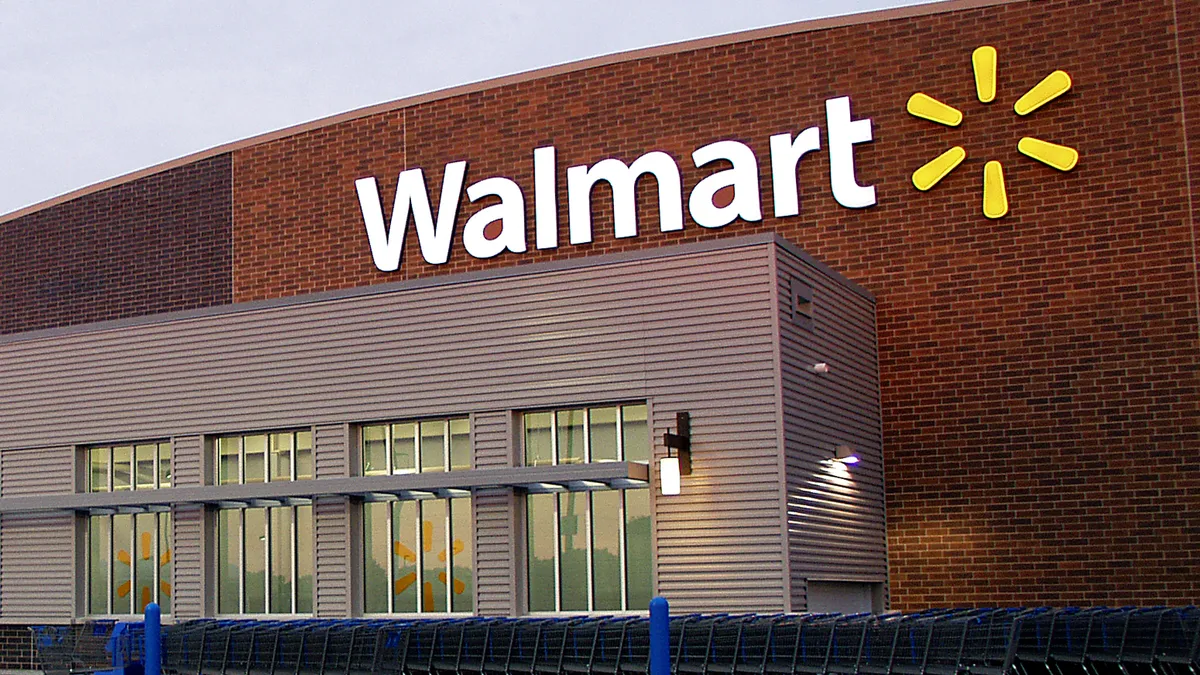Dive Brief:
-
At its annual Investment Community Meeting Thursday, Wal-Mart Stores executives detailed plans to pivot toward e-commerce, earmarking $11 billion in capital spending to boosting online sales while drastically slowing down the number of new physical stores the company opens.
-
E-commerce sales, which have been lackluster at Wal-Mart compared to its rivals, are projected to grow between 20% to 30% in the second half of the year, excluding the recent sale of Chinese e-commerce site Yihaodian to Alibaba rival JD.com.
-
The brick-and-mortar slowdown means Wal-Mart will open just 35 new supercenters in fiscal 2018 — half as many as the 69 it opened last year — and will open just 20 new Neighborhood Market stores in the same period, way down from the 161 it opened last year.
Dive Insight:
Wal-Mart is keeping its massive capital spending budget steady, but its change in priorities marks the biggest transformation of its retail model since Sam Walton opened his first store with the promise of always low prices.
The most obvious sign of Wal-Mart's commitment to its digital strategy is its $3.3 billion purchase of Jet, a barely-year-old e-commerce startup that has never turned a profit. The startup mentality appears to be creeping into Wal-Mart executive culture and style, with the Wall Street Journal noting that executives didn’t wear ties to Thursday's investor event.
“I don’t think it’s an exaggeration to say we are going through a transformative period,” Wal-Mart CEO Doug McMillon told investors and analysts at the meeting.
Some observers have said that Wal-Mart has left too much on the table when it comes to e-commerce, letting Amazon (a retailer in part designed with much of Sam Walton’s philosophy in mind) dominate, and that these new efforts are necessary for Wal-Mart to survive. The investments will take their toll on Wal-Mart's bottom line, with executives warning that fiscal 2018 earnings will be flat compared with this year — somewhere between $4.29 to $4.49 per share — and that fiscal 2019 earnings would hit the low end of its previous outlook of between 5% to 10% growth.
Moody’s Investor Service nevertheless expressed confidence in the shift. "Wal-Mart's statement that it was pursuing online sales growth rates of 20%-30% reflects the emphasis the company continues to place on this critical channel," Moody's lead retail analyst Charlie O’Shea said in a statement emailed to Retail Dive. "Our view is the low end of this range would be impressive, and would be sufficient to justify the increased investment in the online channel."
But others are not so sure that Wal-Mart should transform itself so completely. Nick Egelanian, president of retail real estate consulting firm SiteWorks, noted that Dollar General is building 1,000 more stores next year, Target is also opening “hundreds” more smaller format stores in urban areas, and former pure-play retailers like Warby Parker and Bonobos are investing more in brick and mortar.
“This reminds me of Kmart at the time they were buying Borders Books, and losing money and losing focus. Wal-Mart then was building a better discount store and passed them by,” Nick Egelanian told Retail Dive. “Wal-Mart needs to be very careful about investing so much in the internet because of all the retailers building more stores. That market share is coming from Wal-Mart. They could be the next Kmart, and they’re the ones who put it to Kmart when they took their eye off the ball.”












